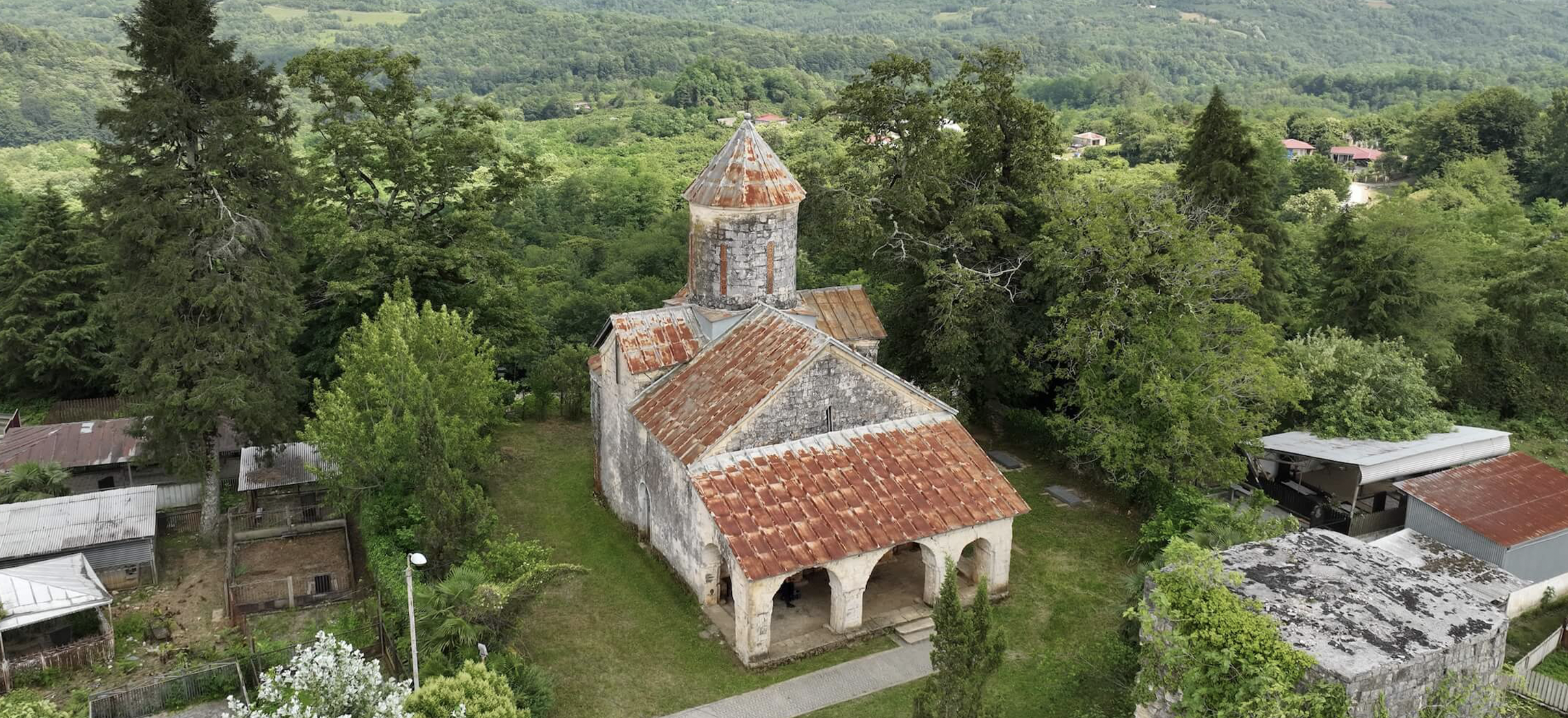
Feel free to add tags, names, dates or anything you are looking for


The village of Kortskheli is located in the Samegrelo region, approximately eight kilometers northeast of Zugdidi. The Church of the Mother of God stands on the edge of the village, surrounded by subtropical trees. Over the past two centuries, a cemetery has been developed around it.
Kortskheli Church, viewed from the northwest
The Kortskheli church was constructed between 1624 and 1639 at the initiative of Levan II Dadiani, Prince of Samegrelo, and his wife, Princess Nestan-Darejan. The story of its construction is recorded in an inscription on an icon of the Savior, which Prince Levan Dadiani donated to the church in 1640. According to the inscription, the prince gifted the completed church to the Monastery of the Holy Cross in Jerusalem, which he had previously supported.
Apses on the eastern façade
Kortskheli Church is a domed structure, faced with hewn blocks of greyish stone. The dome rests on two piers of square plan on the western side, and on the projecting walls of the sanctuary to the east. A second pair of similar piers supports arches that divide the extended western part of the building into three naves. However, from the exterior, this section is not articulated, and is covered entirely by a gabled, two-sloped roof. On the eastern side, the apses of the sanctuary, prothesis, and diaconicon form three semi-cylindrical projections.
The western façade
In keeping with the tradition of medieval church architecture in Samegrelo, the church features a large arched gallery along its western façade. Another regional peculiarity is the absence of a front wall enclosing the prothesis, leaving it open to the main congregational space.
The dome
The round drum of the dome is plain and undecorated. It has seven windows—an unusual number for a Georgian church. Openwork ceramic panels are inserted into the window openings. In the Middle Ages, such panels were commonly used in place of glass, which was often unavailable. While they dimmed the incoming light, they also protected the interior from birds and bats.
Interior view of the dome
The church was painted immediately after its construction. Fragments of these murals remain visible in various parts of the interior.
In 1815, the church was restored by Nicholas Dadiani, a fact recorded in an inscription on the eastern side of the north-western pier. Further repairs were undertaken in 1858. A few years later, a templon was installed in front of the sanctuary, although it disappeared during the Soviet period. The current templon dates from the 2000s.